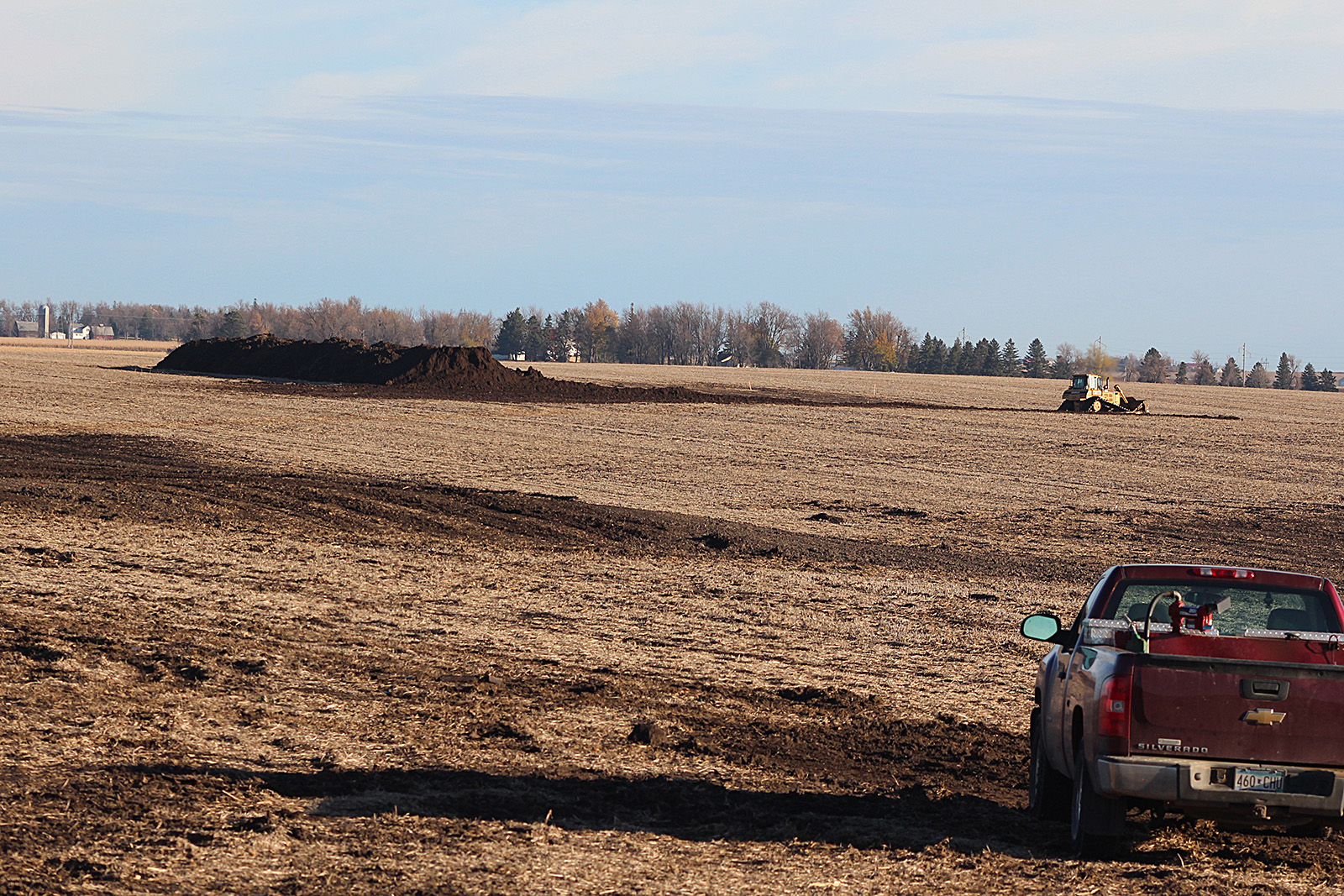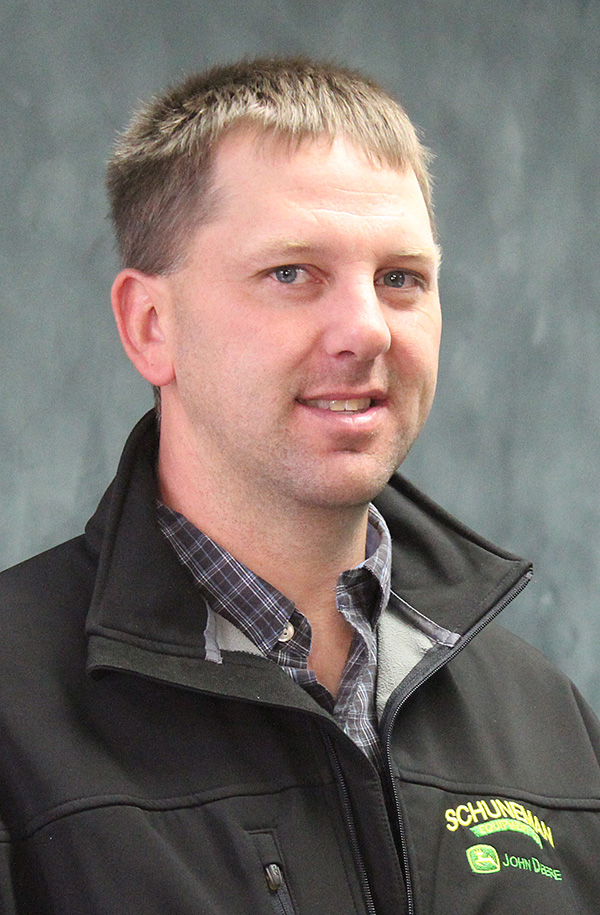 ,
, 
Jason Fick considers himself a conscientious farmer who takes care of his land. That’s why he was so disappointed when last year’s flooding washed topsoil from his fields into the ditch.
Fick said he knew some of his land was vulnerable to erosion, so he’d done some tiling and left some of the flood-prone areas untilled.
But those measures were no match for the June 2014 flooding.
The same rushing water that took out roads and bridges also sliced deep gullies through area cropland — even where established erosion control measures were in place.
And the timing couldn’t have been worse. New crops were just emerging, and plants hadn’t yet formed protective canopies over the rows.
Black dirt filled ditches all over Rock County, prompting Fick and other crop producers to rethink their farming methods.
“I think what bothered me the most is that I take a lot of pride in taking care of the land,” Fick said. “The idea is for us to leave it in better shape than when we started.”
Local ag officials estimate Rock County landowners suffered $4 million in flood damage, so Doug Bos lobbied the state for help.
“FEMA covered infrastructure costs, like rebuilding roads and bridges, but there was no money for ag losses,” said Bos of the Rock County Land Management Office.
He credited Luverne legislators Joe Schomacker and Bill Weber for their work in securing the Flood Relief Cost Share Program for southwest Minnesota.
“Rock County received $1 out of every $7 the state issued for flood relief,” he said. “So this program has been very good to Rock County.”
Projects engineered to
USDA standards, state pays for 90 percent of costs
Fick was among the first to inquire about the program, and his project was completed this fall.
“I’m very happy with the way it turned out and I feel good about it,” he said. “Anything you can do to improve soil and water quality is a good thing.”
Six basins, engineered to meet USDA standards, were built on roughly 40 to 50 acres of Fick’s cropland.
Each basin, averaging 500 feet long, has a capacity to hold 3 inches of rain over 24 hours (what’s considered to be a 10-year flood event) and slowly release the water.
The idea is to control flooding and prevent erosion that can occur with rushing water.
“It makes me sick to my stomach to see dirt in the ditch and gullies in the field,” Fick said. “So I do feel good about what we did, and I’m hopeful it’s a long-term fix.”
Fick’s basins are entirely farmable with the sides sloped gently to allow tillage. Steeper models may require grassy edges, similar to terraces.
In all, the project on Fick’s ground west of Luverne cost $42,800. Of that, the Flood Relief Cost Share Program covered 90 percent.
120 projects on waiting list;
‘It all adds up … I think
we can make a difference’
“I applaud people like Jason who are proactive in addressing these problems,” Bos said.
The idea behind public funding of private land improvements is to improve soil and water quality for everyone, according to Bos.
“It all adds up to less water coming into the Rock River all at one time,” he said. “Slowing the water helps everyone downstream.”
There are five main tributaries upstream from Luverne and three south of town that feed the Rock River, and Bos is working with landowners in this Rock River watershed to take similar measures like Fick did.
“If you duplicate this process across the landscape, it adds up,” Bos said.
There are now 120 projects currently waiting for implementation under the cost share program, and Bos is urging more producers to apply.
Projects could include basins, terraces and waterway implementation (planting permanent vegetation in field valleys).
“If we can get 40 projects like this done next year, I’ll be really happy,” he said, “but that will require help from Mother Nature, too.”
Program offers nearly
$2.4 million to Rock County for conservation projects
The first phase of the Flood Relief Cost Share program provided $167,000 to fix existing conservation practices in Rock County that were destroyed in flooding.
Phase 2 provides $1.2 million for repairing existing and implementing new conservation practices (like Fick’s) to prevent flood damage. This work will continue through December 2017.
Phase 3 could provide an additional $1.2 million for additional measures if Rock County receives more requests.
“Not all producers’ ground is going to work the same, but if each farmer looks at their own individual problem areas, I think we can make a difference,” Bos said.
‘I want to be a producer who’s willing to try to do better’
Fick said he’s aware that the heavy equipment west of town generated interest in his project, but he said he doesn’t consider himself a conservation spokesman.
“The project speaks for itself,” Fick said. “I’m not going to say I do everything right, but I want to be a producer who’s willing to try to do better.”
One thing he’s had success with is strip-till planting, and he encourages other farmers to try that option as an effective conservation tool.
The important consideration in protecting topsoil is that what works in one field might not be appropriate for another, depending on slope, drainage and the type of soil.
That’s why no one wants to be forced into a one-size-fits-all solution to improving soil and water quality, Fick said, emphasizing that it starts with personal responsibility.
“As time goes on, people have to be willing to take the measures that need to be taken on their own property to alleviate the problems we’re seeing,” Fick said.
“Otherwise we’re going to be forced into programs that aren’t necessarily right for us.”
Extreme weather becoming the norm; be prepared
Bos said he hopes producers take advantage of the state’s cost share dollars, because climatologists warn extreme weather events may become the norm.
“The 2014 flood happened, and some farmers tried to fix it on their own, but then ‘15 came along, and did even worse damage — cutting down to the clay and bedrock in some areas,” Bos said.
“Call it climate change or global warming — it is affecting us, these extreme rainfall events, and they’re coming at a time of year when there’s no crop canopy to absorb the water.”
While conservation measures protect soil and water quality for everyone, Bos said it will ultimately affect a farmer’s bottom line.
“A farmer looks at productive capability of the soil,” Bos said. “If you erode this and it’s gone, you can’t get the soil back.”
To inquire about the Flood Relief Cost Share Program and other conservation measures at the Rock County Land Management Office, call 507-283-8862, ext. 4.


